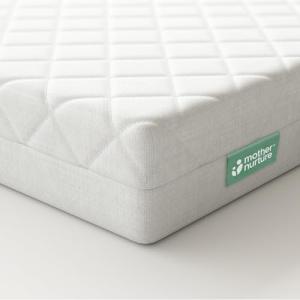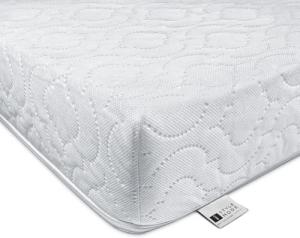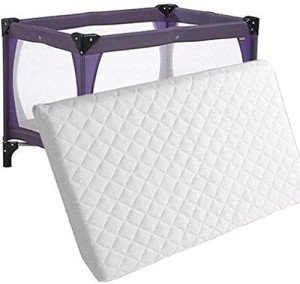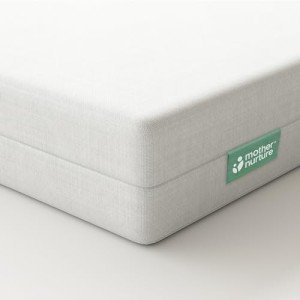When it comes to creating a safe and comfortable sleeping environment for infants, choosing the right crib mattress is paramount. With growing concerns about children's health and the environment, parents are increasingly looking for products that are both eco-friendly and effective in providing a safe sleeping surface. One such solution gaining momentum in the market is the eco-friendly hypoallergenic crib mattress—especially those that are reversible and waterproof. This blog post delves into the benefits, features, and practical considerations of these innovative mattresses.
Key Features of Eco-Friendly Hypoallergenic Crib Mattresses
Before diving into the specific benefits, it’s essential to understand some key features that set these mattresses apart.
| Feature | Description |
|---|---|
| Eco-Friendly Materials | Made from sustainably sourced materials, often organic cotton, natural latex, and recycled products. |
| Hypoallergenic | Designed to minimize allergens, ideal for babies with sensitivities or respiratory issues. |
| Reversible | Two-sided design allows for varied firmness levels or different sleeping surfaces—great for longevity. |
| Waterproof | Protective waterproof layer that prevents spills and accidents from penetrating the mattress. |
| Breathable Design | Often features airflow channels to enhance ventilation, keeping your baby comfortable and dry. |
Why Choose an Eco-Friendly Hypoallergenic Crib Mattress?
1. Health and Safety
In recent years, parents have become more aware of the harmful chemicals often found in conventional crib mattresses. Traditional mattresses may contain flame retardants, formaldehyde, and other volatile organic compounds (VOCs) that can emit harmful fumes. Eco-friendly hypoallergenic mattresses are manufactured with safer materials, reducing health risks associated with chemical exposure.
2. Allergy Prevention
A significant portion of infants suffers from allergies and sensitivities. Hypoallergenic mattresses are crafted to prevent the growth of mold, dust mites, and bacteria, creating a healthier sleep environment. By using materials that resist allergens and irritants, these mattresses can significantly reduce the likelihood of allergic reactions.
3. Environmental Sustainability
Choosing eco-friendly products reflects a commitment to environmental sustainability. Many of these crib mattresses are made from organic and natural materials that are biodegradable, reducing landfill waste. For environmentally conscious parents, investing in a sustainable product not only benefits their child but also contributes to a healthier planet.
4. Versatility and Longevity
A reversible crib mattress can extend the lifespan of the product significantly. With two sides that can be used, parents can choose the level of firmness that best suits their baby's sleeping needs. When one side begins to show wear, simply flip it over for a fresh sleeping surface!
5. Easy Maintenance
The waterproof feature becomes a lifesaver for parents dealing with inevitable nighttime accidents. A waterproof crib mattress protects the core from spills and odors, ensuring that the mattress remains hygienic with minimal effort. Most can be easily wiped down or spot-cleaned, offering convenience during a busy parenting phase.
Tips for Choosing the Right Mattress
When selecting an eco-friendly hypoallergenic crib mattress, consider the following factors:
- Certifications: Look for certifications such as Greenguard Gold, CertiPUR-US, or GOLS. These certifications ensure the mattress meets strict standards for emissions and safety.
- Firmness: Infants require a firm sleeping surface for safety. Choose a mattress designed specifically for babies that offers the right level of firmness.
- Material Composition: Opt for mattresses made from organic cotton, non-toxic foams, or natural rubber latex. These materials prioritize both safety and comfort.
- Dimensions: Ensure the mattress fits snugly within the crib, as a gap can create a safety hazard.
- Ease of Cleaning: Investigate the maintenance requirements. A removable, washable cover can vastly improve hygiene.
Pros and Cons of Eco-Friendly Hypoallergenic Crib Mattresses
| Pros | Cons |
|---|---|
| Safer for baby with reduced chemical exposure | Often more expensive than traditional mattresses |
| Reduces allergens and irritants | May require specific cleaning or care practices |
| Environmentally sustainable options available | Limited options in terms of styles and designs |
| Longevity through reversible design | Some may feel firmer than traditional mattresses |
| Easy maintenance with waterproof options | Availability may be limited depending on location |
FAQs
Q1: Are eco-friendly crib mattresses worth the investment?
A1: Yes, while they may come at a higher price point, the health benefits, safety features, and long-lasting nature of these mattresses often justify the cost.
Q2: How do I clean an eco-friendly crib mattress?
A2: Most waterproof eco-friendly mattresses can be wiped clean with mild soap and water. For better hygiene, a removable cover, if available, can be washed in a washing machine.
Q3: How can I ensure my crib mattress is genuinely hypoallergenic?
A3: Look for recognized certifications and brand transparency regarding materials used. Brands that prioritize eco-friendly practices will usually provide this information.
Q4: When should I replace my crib mattress?
A4: It's typically recommended to replace the crib mattress every 3-5 years, or if it shows signs of wear, odors, or significant sagging.
Q5: What is the lifespan of an eco-friendly hypoallergenic crib mattress?
A5: With proper care, these mattresses can last between 5 to 10 years, depending on usage.
Choosing the right crib mattress is a critical decision for new parents, impacting their child’s health, safety, and comfort. Eco-friendly hypoallergenic crib mattresses that are reversible and waterproof offer a wealth of advantages, from allergen reduction to sustainable materials. By investing in these innovative sleep solutions, parents can provide a nurturing environment for their little ones while making environmentally responsible choices. In a world keen on improving health and sustainability, these mattresses represent a perfect blend of safety and eco-awareness for the growing family.






